Canadian Bubbly, eh?
9th March 2023
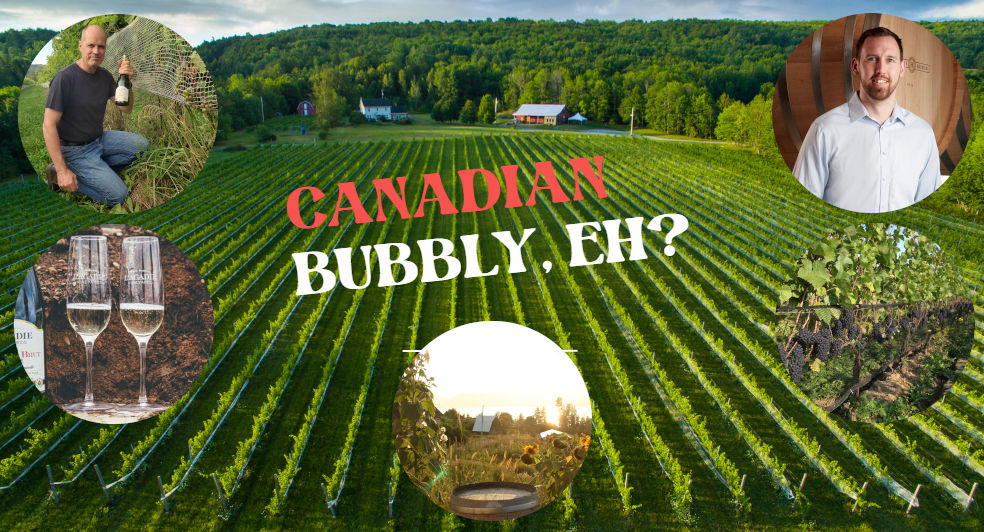
Canada is at once large and small.
If travelling along the Trans Canada Highway across the breadth of the country, east to west, you would cover 4,860 miles or 7,821 km.
But it is also small when viewed in terms of the total global wine production volume (26.7 billion litres) where Canada represents only 0.3% (100% Canadian/VQA wines according to Wine Growers of Canada).
Albeit small by that production scale, it is mighty when it comes to sparkling wines.
Of the 638 wineries across the country, a third produce bubbly! The vast majority use traditional method, but there are also Charmat/Tank method, frizzante/mousseux, and Pét-Nat wines.
Domestic consumption and popularity of Canadian sparkling wines has tripled in the last decade. It is the fastest growing segment of the wine industry.
What is different and typically Canadian about our bubbly is the range of grape varieties used in the production.
Of course, all the familiar suspects are here … Chardonnay, Pinot Noir, Meunier … as well as Riesling and Chenin Blanc.
According to Master Sommelier John Szabo, top Canadian bubbly is made using traditional method with “Chardonnay … and Pinot Noir. Three years on the lees … about average, with many examples spending five or more, far exceeding the minimums stipulated in all the world’s great sparkling regions, Champagne included. The extended ageing allows wines to soak up those complex toasty-biscuity-brioche flavours in a process called yeast autolysis, the backbone of all great bubblies in the traditional style.” He concludes by saying Canada’s top sparkling wines are among the world’s best values!
But you will encounter seriously fun bubblies made with Viognier, Gewurztraminer, Ortega, Pinot Auxerrois, Pinot Blanc, Pinot Gris, Zweigelt, Gamay Noir and even Shiraz … or any combination thereof. Some producers even use Canadian Icewine as dosage for their bubbly.
So New World, so Canadian, eh?
In addition, colder regions like Québec, Nova Scotia and some areas of Ontario use hybrid grape varieties like Seyval Blanc, Vidal, Frontenac, L’Acadie Blanc, Sainte-Croix and Maréchal Foch. They also often blend vinifera and hybrids producing interesting and good quality bubbly.
Did you know? Most of Canada’s cool climate wine growing regions are at the same latitude as Champagne and Burgundy!
Cool climate, yes, but our wine regions are influenced by large bodies of water such as the Atlantic Ocean and Bay of Fundy in Nova Scotia, the Great Lakes in Ontario, and the Pacific Ocean and Lake Okanagan in British Columbia. These moderating effects produce a high diurnal range (day versus night temperatures) which slows down ripening and helps to retain acidity in the grapes during our often hot summers, they also extend the growing season to aide phenolic development, and they mitigate winter’s frigid grip.
But enough with generalizations about Canadian bubbly, let’s meet three winemakers in three different wine growing regions who produce award winning sparkling wines … and they are all certified organic, to boot!
I asked each winemaker to answer the same three questions. Let’s hear what they had to say.
1. What are the unique challenges of growing sparkling wine grapes in your region?
Bruce Ewert, Winemaker, L’Acadie Vineyards (Gaspereau Valley, Nova Scotia):
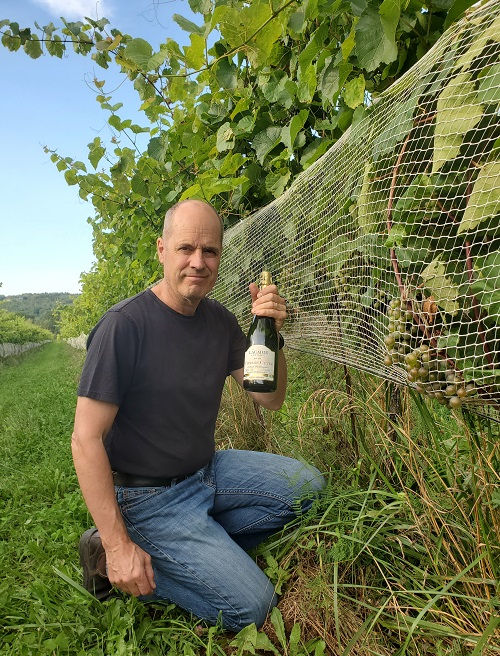
“We have an enviable climate in Nova Scotia to achieve that elusive intersection of ripeness and freshness. Our challenge is climate change and maintaining our distinct qualities of ripeness with moderate sugar levels and acid retention. We have had many successes with our region’s signature L’Acadie Blanc grape, and with vinifera such as Chardonnay and Pinot Noir – all working well at 1100 heat units (base 10 degrees Celsius). What if that elevates? We believe that our organic and Biocyclic Vegan vineyard practices will provide some resilience by cover cropping, reduced tillage, grape pomace compost and biological diversity. Living soils with symbiotic microbes that help vines access minerals and other nutrients provide a buffer to stresses from more variable weather events such as drought.
I believe there is this link between ‘terroir’ and organics that the best wines of the world are based on. My head was turned, and my path changed, at Summerhill Pyramid winery in Kelowna, also an organic winery. As head winemaker there for eight years, I saw better flavours from grapes farmed organically, after many years working with conventional grapes.”
Alex Baines, Winemaker, Hidden Bench (Beamsville Bench, Ontario):
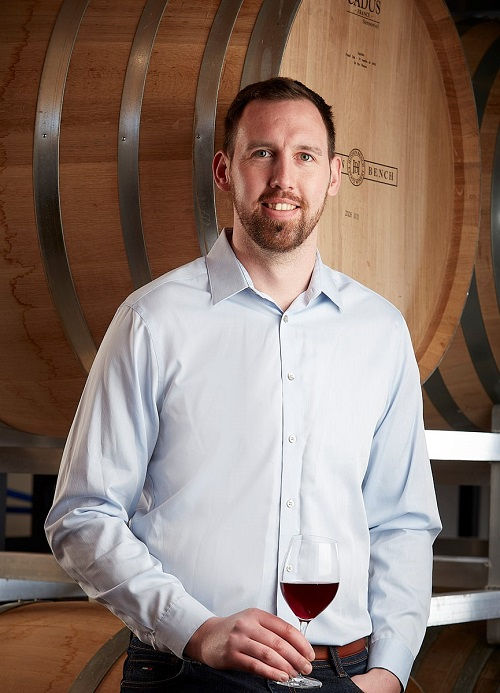
“In Niagara, each growing season is unique and different, so we need to adapt our viticulture to each season. As a certified organic producer this takes lots of care and attention from our vineyard team, as we have a more limited selection of products to choose from compared with non-organic vineyards. The other very important decision we need to make every year is the timing of picking our sparkling grapes, which depends on each season. As an estate winery, we have full control over our vineyards, and this helps us make the best picking decision based on the balance of our fruit for sparkling, to make the highest quality sparkling wine we can year after year.”
Michael Alexander, Winemaker, Summerhill Pyramid Winery (Kelowna – Okanagan Valley, British Columbia):
“Summerhill is committed to producing 100% organic wine. Our Kelowna 17 hectare vineyard entered the certification program in 1988 and has since received Demeter Biodynamic certification (2012). Natural springs emerge on the property, and join with creeks to create a beautiful wetland nature sanctuary that supports a variety of species. This biodiversity and the natural flora help to improve our soil life and water retention, important elements to growing quality grapes!
That said, British Columbia experiences vintage variation but we at Summerhill celebrate it because it is one of the many things that make our wines so exciting. With that comes the challenge of ensuring the sparkling fruit hits the sugar and acid numbers we are looking for.”
2. Do you have any special approaches to production?
Bruce Ewert, Winemaker, L’Acadie Vineyards (Gaspereau Valley, Nova Scotia):
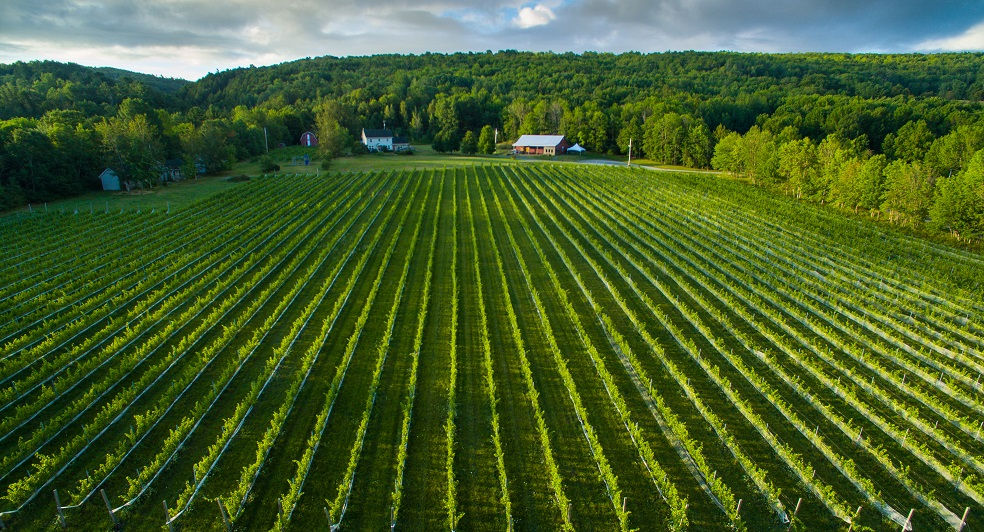
“We have had success with tirage at 2 years, and as far out as 5-10 years of bottle conditioning for our traditional method sparkling wines. Harmony refers to the balance between fruit aromas and toasty yeast contact, and we are able to achieve it with our terroir. We purchased our estate for the rocky well-drained soil, an ancient seabed, and mineralization from schist, sandstone and slate give our estate wines a minerality and slight saline essence that fits well into the complexities from bottle aging.”
Alex Baines, Winemaker, Hidden Bench (Beamsville Bench, Ontario):

“The winery, founded in 2003, has had a non-interventionist, quality-focused and terroir-driven approach to winemaking right from the start and has earned a reputation for consistent excellence both domestically and internationally.
Like all grapes at Hidden Bench, we hand pick and hand sort our grapes for sparkling. The fruit is whole bunch pressed, the juice is then settled in tank overnight, racked and transferred to barrel via gravity. We have always chosen to barrel ferment our sparkling base wine in neutral French barrels. After primary fermentation, it is aged in barrel for 6-8 months and malolactic fermentation is blocked. After bottling, the wine spends 4 to 5 years on lees before being disgorged with zero dosage.”
Michael Alexander, Winemaker, Summerhill Pyramid Winery (Kelowna – Okanagan Valley, British Columbia):
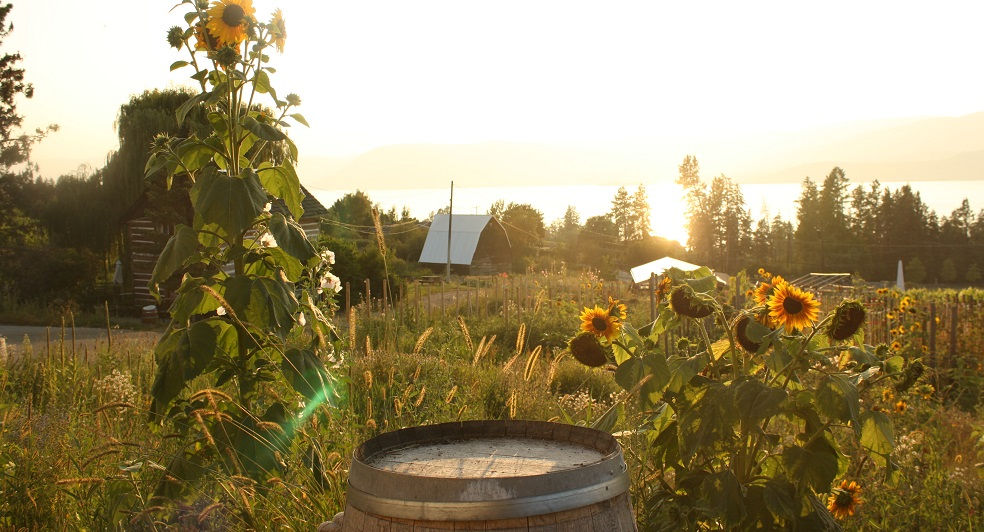
“We keep it organic and traditional; we spent over 4 years working on an organic traditional method sparkling program, the first of its kind in Canada. It took time to ensure that the yeast riddled properly, the wine fermented, and the flavour wasn’t compromised. After hundreds of trials we realized that going organic made the wines more enjoyable.”
3. What is your favourite bubbly that you produce and why?
Bruce Ewert, Winemaker, L’Acadie Vineyards (Gaspereau Valley, Nova Scotia):
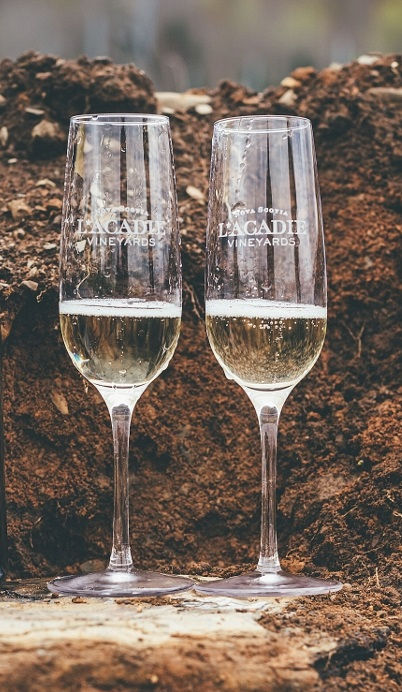
“I’m always attached to Prestige Brut Estate. Current release is 2015 and you get to know the bottles very well over the years of aging in our tirage cellar. We always source grapes from the same block of L’Acadie Blanc planted in 2005, and the roots in 2017 were over a metre deep into our ancient seabed soil. So proud to see it do well in international wine competitions in the UK and France.
I’m also excited about our new Charmat method sparkling production. It complements our traditional method production. Charmat method sparkling wine has a relatively brief time in specialized Charmat tanks to complete the natural second fermentation, keeping wine fresh and fruity with creamy persistent natural bubbles. Joie de Vivre was our first release.”
L’Acadie Vineyards Organic Sparkling Wines:
◦ Vintage Cuveé 2019 $31.13 (88% L’Acadie Blanc, 12% Seyval Blanc)
◦ Prestige Brut Estate 2015 $47.65 (100% L’Acadie Blanc)
◦ Prestige Brut Estate Extended Tirage 2010 $69.39 (100% L’Acadie Blanc)
◦ Vintage Cuveé Rosé 2019 $31.13 (32% L’Acadie Blanc, 56% Marechal Foch, 12% Seyval)
◦ Rosé Brut 2019 $31.13 (100% Marechal Foch)
◦ Joie de Vivre 2021 $25.04 (87% L’Acadie Blanc, 13% Seyval blanc, Charmat method)
◦ La Vie en Rose 2021 $25.04 (a blend of L’Acadie Blanc, Marechal Foch and Seyval Blanc, Charmat method)
◦ Petillant Naturel 2021 $25.04 (100% L’Acadie Blanc, lightly disgorged, no dosage)
◦ Mousseux NV $31.13 (94% L’Acadie Blanc, 6% Marechal Foch)
Alex Baines, Winemaker, Hidden Bench (Beamsville Bench, Ontario):
“We produce one sparkling every year called Natur. This is a blend of Pinot Noir and Chardonnay, the percentages change based on the conditions of the growing season. In years where the Chardonnay shows exceptionally well, we make a Blanc de Blanc as well.”
Hidden Bench Organic Sparkling Wines:
◦ Nature Zero Dosage 2016 $45 CAD (72% Pinot Noir, 28% Chardonnay)
◦ Blanc de Blanc Zero Dosage 2014 $48 CAD (100% Chardonnay)
◦ Nature Zero Dosage 2013 $65 CAD (70% Chardonnay, 30% Pinot Noir)
◦ Rachis & Derma Chantilly Rosé $30 CAD (Méthode Ancestrale, 100% Pinot Noir, highlighting natural wine making with very minimal sulphur additions)
Michael Alexander, Winemaker, Summerhill Pyramid Winery (Kelowna – Okanagan Valley, British Columbia):
“That is like asking a parent which child is their favourite. They have one, they just can’t say.”
Summerhill Pyramid Winery Organic Sparkling Wines:
◦ Cipes Brute NV $34 CAD (70% Riesling, 20% Pinot Blanc, 10% Chardonnay)
◦ Cipes Brut Rosé NV $37 CAD (85% Pinot Noir, 15% Chardonnay)
◦ Cipes Blanc de Blanc 2012 $44 CAD (100% Chardonnay)
◦ Cipes Traditional Cuveé 2004 $85 CAD (87% Chardonnay, 13% Pinot Noir)
◦ Cipes Ariel 2000 $100 CAD (60% Pinot Noir, 38% Chardonnay, 2% Meunier)
![]()
Lidija Biro DipWSET
Canadian wine blogger/writer with eclectic wine tastes and an avid interest in lesser known grape varieties as well as sustainable vineyard/winemaking practices. She is a DipWSET Candidate, a French Wine Scholar (WSG), and a Graduate of Niagara College Winery & Viticulture Program.
